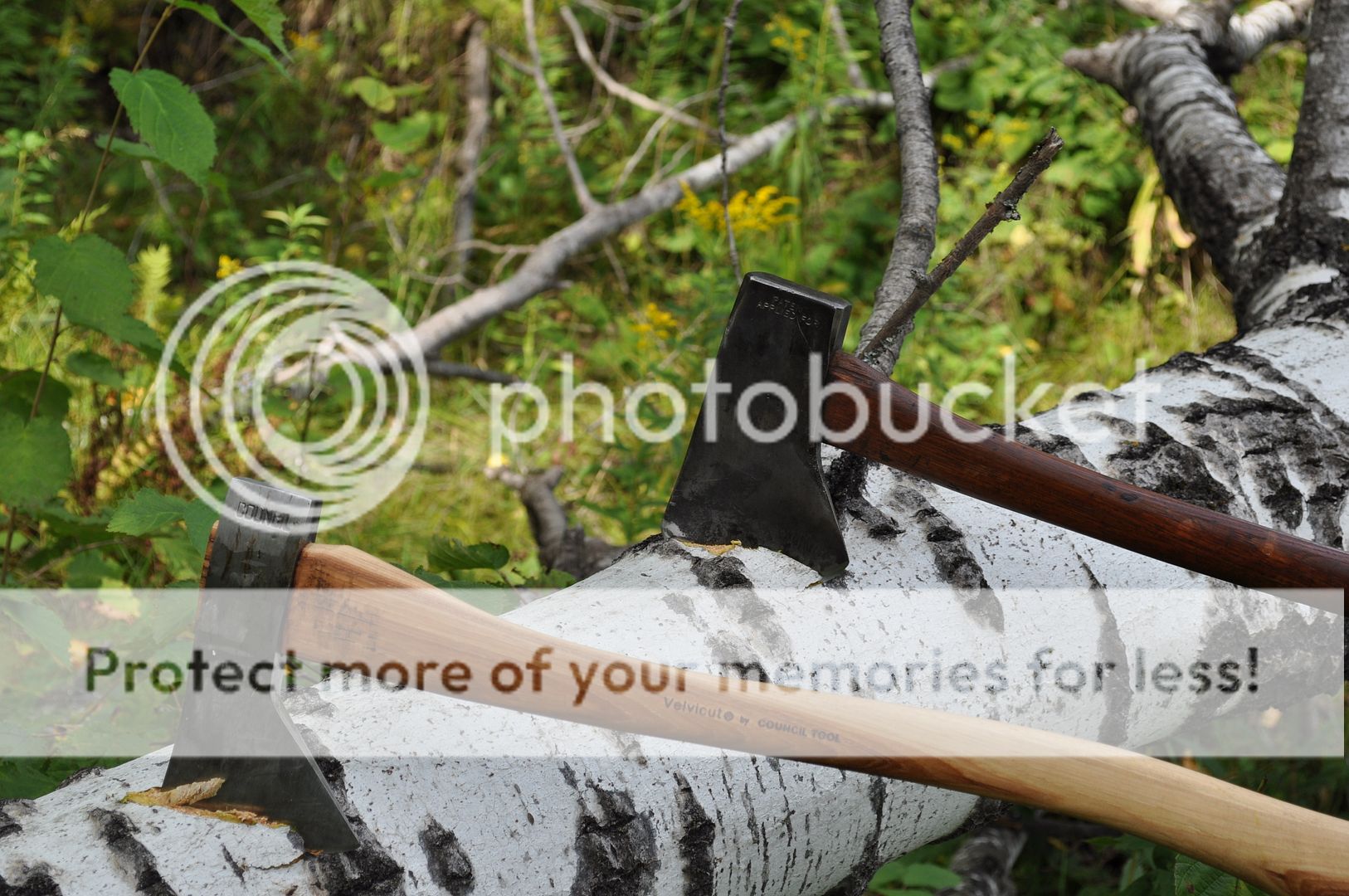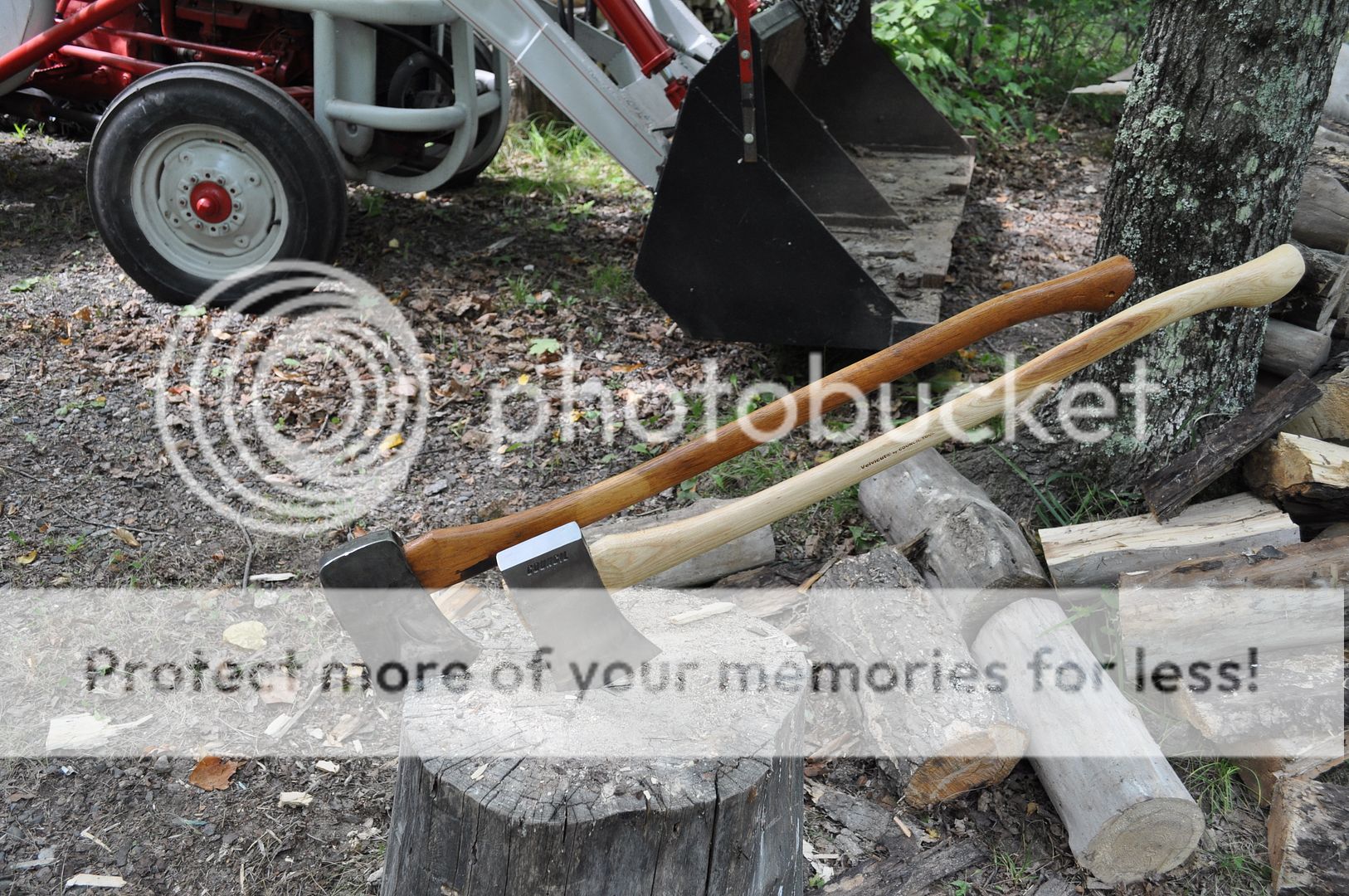Ribs in the eye was an idea first brought to life by Mann Edge Tool, then copied by Kelly and really put into play by them on their Woodslasher, Flint Edge, and Perfect lines. Mann Edge got away from it as it was an added expense in the dies and in handle fitting process. Kelly was after the "head won't come loose" side of the advertising, as this was right around the time the axe was losing sales and popularity to the chainsaw, and Kelly needed every angle it could get.
The ribs are a PITA when refitting a new handle as stated above, there is no other way around it. Overall effectiveness when it comes down to it is questionable as well.
For the other question about the Hudson Bay style pattern, it has adv and disadv just like anything else. Adv - lighter head weight, nice wide poll for its size, looks different so its "cool". Disadvantges - less handle to head contact so more like to come off/get loose easier, especially with hard use. Poll is small, so less beat area if needed. I use one as my main yard work axe for basic tree limbs, roots, etc. I find a mid 20 inch is a great size as I can handle it with one hand like a hatchet, but then can double down if i need it for a slightly larger project. Nice overall weight so im not bogged down all day. Overall I like them, but for misc tasks, not out in the woods working.
Hope this helps.
Thanks!


